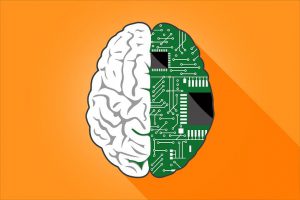Wednesday
Opinion PiecesThe iPhone and I
Looking at our smart phones through the lens of meditation
by Phil Beatty
 There is nothing quite like the iPhone. It is the most popular, most essential and most highly praised artifact in our hi-tech world. Actually, though I’m using the term “iPhone,” I actually mean smart phones in general. These little digital wonders have transformed our world as widely and profoundly as the invention of the automobile and the airplane. Furthermore, they’ve done it with unprecedented speed.
There is nothing quite like the iPhone. It is the most popular, most essential and most highly praised artifact in our hi-tech world. Actually, though I’m using the term “iPhone,” I actually mean smart phones in general. These little digital wonders have transformed our world as widely and profoundly as the invention of the automobile and the airplane. Furthermore, they’ve done it with unprecedented speed.
They are everywhere. Everyone has one. We can’t live without them. They are absolutely essential to the way we communicate and to the way we transact business. In less than a generation Apple, Google, Verizon, Samsung, and related companies have become corporate goliaths dwarfing older economic powerhouses such as GM, IBM, Lockheed, and Sony.
We have all seen videos and heard jokes about people so engrossed in their phones that they walk into fountains or off the edges of parking decks – because they can’t take their eyes off of the tiny screen in their hand.
I have seen people texting while riding their bicycles.
I was at a local train station the other day. As I waited for my train, I idly counted twenty-five other passengers waiting for the train to arrive. Twenty-three of them were on their phones. Twenty- three people talking, or listening to music, or watching videos, or – most likely – texting.
Wow! Twenty-three out of twenty-five. A sign of the times. What a miraculous age we live in.
 Now, I was not on my phone. So actually there were twenty-three people out of twenty-six who were actively engaged with their tiny computers. Me – I was gazing in awe at the other twenty-three. And to do this I was using the most powerful computer ever created – the human brain.
Now, I was not on my phone. So actually there were twenty-three people out of twenty-six who were actively engaged with their tiny computers. Me – I was gazing in awe at the other twenty-three. And to do this I was using the most powerful computer ever created – the human brain.
Here’s the thing: as powerful, as fast, as intriguing and as handy as the iPhone is, it pales by comparison with the brain of a two-year old child. In fact, it pales by comparison with the brain of a two-year old chimpanzee, or a dog of any age, or a squirrel that at least knows when to come in out of the rain.
For the next minute or so, let your mind dwell on these questions:
-What would it be like to live in the days of the Roman Empire? There is absolutely no one alive now who was alive then, but do you have an idea of what it would be like?
-Would it be worthwhile for you to give up your job and move to the island of your dreams?
-What was your favorite song in high school? Do you remember the words? How does that song make you feel?
-Do you need a new car? What’s the ballpark estimate of its cost? Can you afford to buy it now?
-If you had ten dollars to burn and you were in a dollar store, what would you buy?
The point of this little exercise is to show that in only a minute you can give a definite answer to all of these questions. You don’t have to analyze them deeply. You don’t have to check them against some database. You just read the question, take a deep breath, and an answer appears in your head.
 A smart phone can not answer these questions at all – or could do so only with tons of additional data and some monumental tweaks to its programming.
A smart phone can not answer these questions at all – or could do so only with tons of additional data and some monumental tweaks to its programming.
Of course this is an unfair comparison. No one really expects a hand held mini-computer to measure up nicely to the human brain. This is like comparing a worm to Godzilla; or more accurately comparing a barking dog to Pavarotti (or Elvis, depending on your taste.)
The human brain designed and built the iPhone. Even in the most hi-tech, fever-induced fantasy, a computer can not design a brain. The natural world doesn’t work like that. Building computers is something human beings do – the same way we build shovels, or cars, or buildings, or city streets. We should not be in awe of something we dreamed up and put together.
Every human being who has ever lived is carrying around a computer that is billions of times more powerful than the most powerful computer ever built. Furthermore, we don’t have to carry it in our hands or house it in a special air conditioned structure. We don’t have to change its batteries or plug it into the power grid. It is immensely cheap to run. And it is available to us for fun or work pretty much 24/7.
Plus – big plus here – it is invisible! You can see clear through it! We use our brains but don’t have to look at them. Your brain functions sort of like the “heads-up” display in modern jet fighters. All the information you need is displayed in front of you, so you don’t have to take your eyes off the windshield. So at this very moment you are running a computer that IBM and Google and Microsoft can barely dream of, and you could be doing it while chewing on a hot dog and checking out the hairstyles of the people around you. No chance of walking into a fountain or off of a parking deck!
My question then is this – if we all have free access to brand new powerful pickup trucks, why are we all pushing around shopping carts and talking about how great they are?
As I gazed at the twenty-three iPhone addicts on the train platform, I danced around this question – using my Windows “Two- Million” computer.
And I didn’t have to send a dime to Apple or Verizon.
 Phil Beatty is a recently retired senior citizen who has had an sincere interest in religion and mindfulness practices for most of his life. He was not raised in any religious traditions, and his family never attended any particular church. For the past thirty years he’s devoted his time to working (in retail mostly) and raising a family. He has three grown children and seven grands who he expects will sprout wings any moment now. Recently Phil moved to a nice town in Georgia that happened to have a Shambhala meditation center. It is so close by, he sees it every time he exits his house. He attended their regular open house session, and found the people there so warm and inviting that it felt like he had left his home across the street and entered his “other home.”
Phil Beatty is a recently retired senior citizen who has had an sincere interest in religion and mindfulness practices for most of his life. He was not raised in any religious traditions, and his family never attended any particular church. For the past thirty years he’s devoted his time to working (in retail mostly) and raising a family. He has three grown children and seven grands who he expects will sprout wings any moment now. Recently Phil moved to a nice town in Georgia that happened to have a Shambhala meditation center. It is so close by, he sees it every time he exits his house. He attended their regular open house session, and found the people there so warm and inviting that it felt like he had left his home across the street and entered his “other home.”





